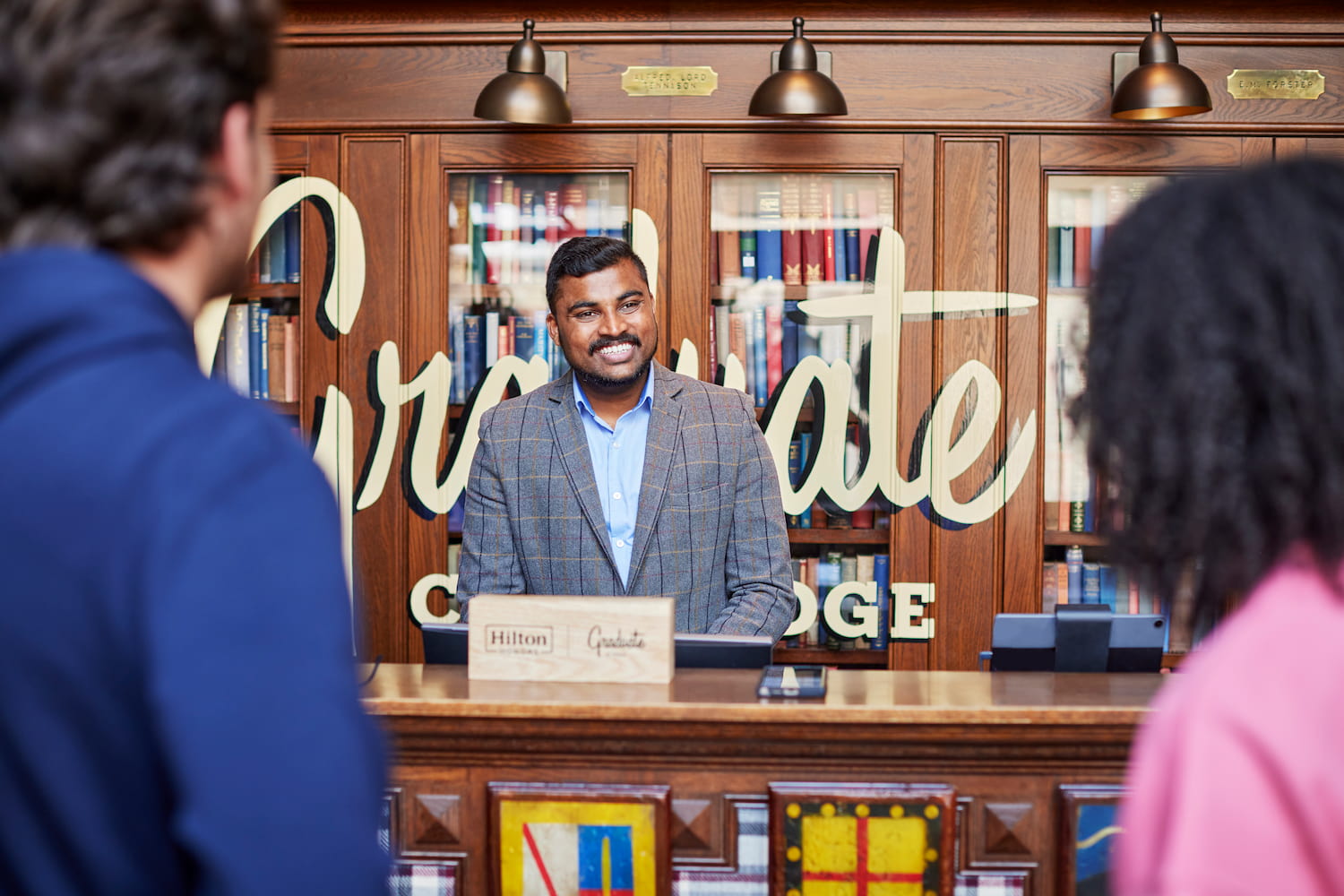Hyatt human-centered design thinking
What happens when you combine one of the world’s leading hotel brands, with over 548 properties in 48 countries, with principles of design thinking? You get a complete transformation of their guest experience… and their culture.
That in a nutshell is what’s happened at Hyatt in recent years. Jonathan Frolich, Hyatt’s Vice President of Global Innovation, shared the company’s story at the recent Great Place To Work Conference — which took place at the Hyatt Regency New Orleans in April.
Frolich’s tale was all the more striking because Hyatt embarked on its foray into design thinking principles three years ago at a time of strength rather than weakness. The company was enjoying record levels of revenue, a surging stock price and ever-increasing employee and guest relationship scores. But Hyatt’s leaders saw the business climate changing everyday. Macro economical growth rates were shrinking while global competition was heating up. Research showed that customers were becoming less loyal to brands than they were 25 years ago. The diffusion of technology meant people have and expect access to information and transparency. It wasn’t enough to keep up with all the changes — the hotel company wanted to get out in front of them.
 To get out in front, Hyatt went back to school. The company connected with the Design School (d.school) at Stanford University in Palo Alto, California, and started using human-centered innovation concepts to create change within the organization. Hyatt leaders began by asking themselves, “Why do we need to change, what is the platform for change and why is it necessary?” and then used Stanford’s design innovation to help transform their culture.
To get out in front, Hyatt went back to school. The company connected with the Design School (d.school) at Stanford University in Palo Alto, California, and started using human-centered innovation concepts to create change within the organization. Hyatt leaders began by asking themselves, “Why do we need to change, what is the platform for change and why is it necessary?” and then used Stanford’s design innovation to help transform their culture.
Hyatt’s management began with engagement surveys, listening to their employees and understanding what mattered to them. They also wanted to know what was going on with guests, why they travel and what their lives were like. They realized that their hotels were too consistent, yet very inconsistent. They found that guests lacked control over their experience and that staff had little control to make decisions and solve problems that could positively impact their guests.
Then they sent key management and senior leaders to Stanford’s three-day intensive course, “Human Centered Design” which pushed their managers to reframe their challenges and look differently at the opportunities. Through these revelations inspired in the course, Hyatt went from simply operating hotels transactionally, with rigid brand and operating standards, to a more enlightened environment defined by providing caring experiences for both guests and employees. Emotional engagement and authentic interactions became the expectation… and the new norm.
 One clear theme that emerged was Hyatt’s need to differentiate itself and break out of the “sea of sameness” of their industry, Frolich said. Previously, a guest’s hotel experience had been designed through a one-size-fits-all lens. They would be greeted with robot-like language and behaviors that felt unwelcoming, not warm, and purely functional.
One clear theme that emerged was Hyatt’s need to differentiate itself and break out of the “sea of sameness” of their industry, Frolich said. Previously, a guest’s hotel experience had been designed through a one-size-fits-all lens. They would be greeted with robot-like language and behaviors that felt unwelcoming, not warm, and purely functional.
To respond, Hyatt leaders turned 10 of their properties into laboratories of innovation, including hotels in San Francisco, Sao Palo and Hong Kong, where they ran iterative experiments with lighting, furniture, guest rooms. They invited management, senior leaders, and even real guests to help in their “research”. Working together, Hyatt made a number of key changes that transformed their entire culture by focusing on transforming the entire guest experience.
Frolich explained how the experience affected Hyatt’s culture in three key ways:
- True empathy and designing around human needs - Hotels often focus on guest “wants”, but the new approach tries to uncover their true “needs”.
- Radical collaboration - Hyatt was able to push their solution-finding out of departmental silos and into dynamic team brainstorming.
- Rapid prototyping - “Fail early and fail often” is their new mantra. They are comfortable trying new ways to satisfy their guests’ needs…and not getting it right on the first try.
While this is clearly a work in progress (you just don’t change nearly 550 properties overnight!), Hyatt’s culture has become more collaborative, with more people involved in the creative thinking process and solving complex problems together.
This overhaul was on clear display at the Hyatt Regency New Orleans at our recent conference. Front-desk staff, chefs, concierges, gift store clerks and food service staff were consistently friendly and genuine. That’s not surprising, given that Hyatt just earned a spot on the 100 Best Companies to Work for in America list for the first time. Another sign that Hyatt is succeeding in designing a new, better culture.







